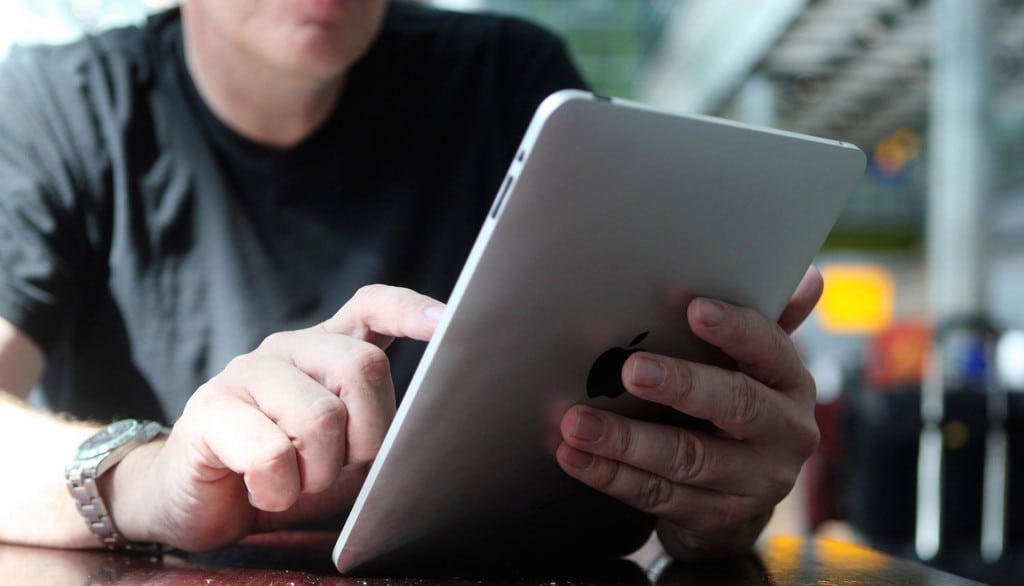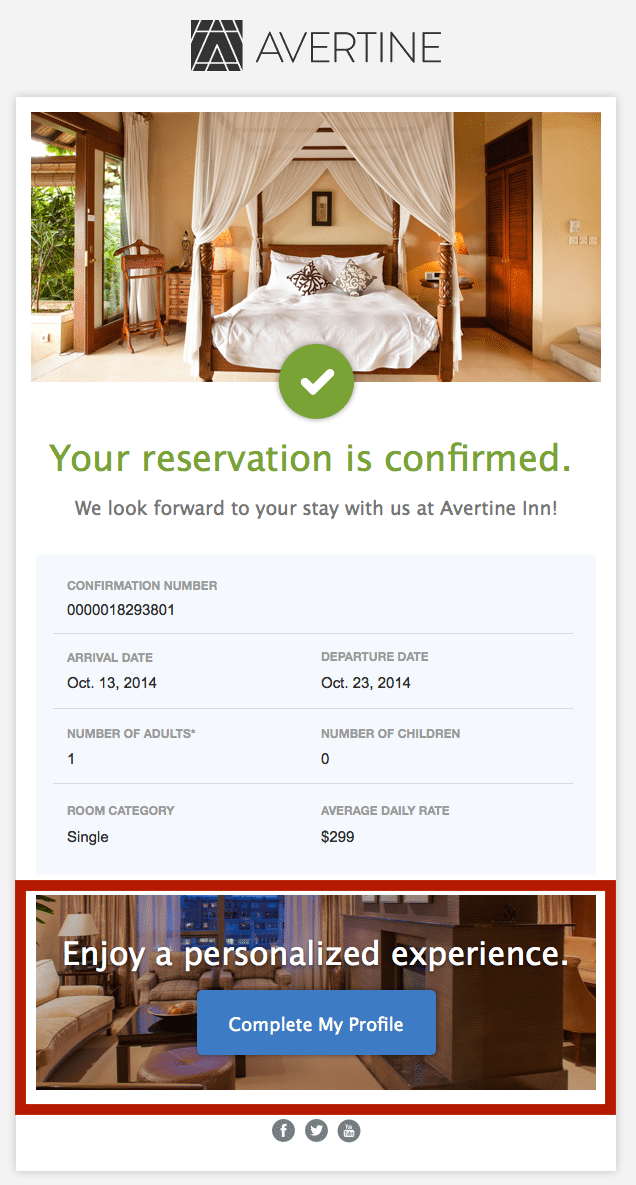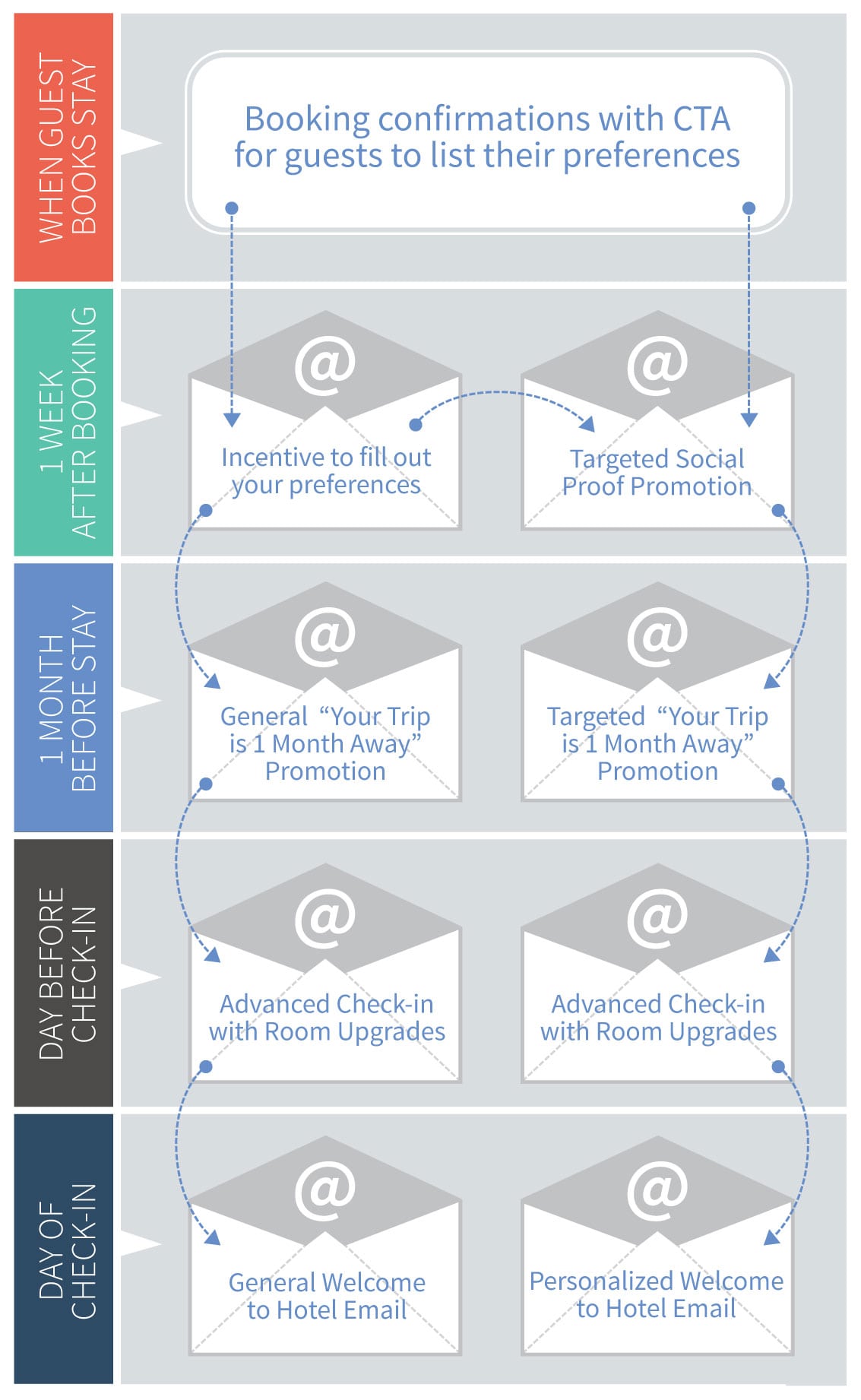Skift Take
As online travel agencies are offering hundreds of options at the finger tips of the consumer, hotels are struggling to get direct bookings. To win business back from the OTAs, hotels need to figure out ways to cultivate better relationships with guests.
For hotels, winning business back from online travel agencies has become priority number one.
In a competitive online booking landscape teeming with options, hotels are struggling to stand out. So, where should discerning hotel marketers be looking to improve direct bookings? While some turn to big budget ad campaigns or SEO hacks, the foundation of the answer is much simpler. You need to cultivate a relationship with your guests.
The basis of this starts with e-mail: a key tool for hotels to connect with guests at all touchpoints and collect information that will help learn what the guest (incoming, current, or former) really wants.
E-mail capture for hotel brands is absolutely essential. But even after collecting guests’ e-mail addresses, most hotels send only generic marketing blasts, transactional e-mails and confirmation e-mails. When you move past generic messaging and personalize communications with guests, you are working to form a bond with your customer—collecting preference info that will help target offers that will surely appeal to them in the future.
According to Formstack, a company that specializes in data management to increase online conversions, companies using personalized marketing in effective ways are seeing an average 19% lift in sales. Personalized e-mails are also shown to have a 25% higher open rate and 51% higher click rate.
If a hotel is using Customer Relationship Management (CRM) software like inGuest, guests’ preferences can be stored and used to send targeted e-mail promotions prior to the guest’s stay. In addition, hotel marketers can access data stored in the hotel’s CRM such as prior stay information and booking habits to drive incremental revenue through room upgrades and amenity promotions. Overall, there is enormous revenue potential to be gained from more direct bookings and more effective marketing campaigns.
So, what kind of pre-arrival e-mails should hotels actually be sending to build stronger relationships with their guests?
Use Your Confirmation E-mail to Learn About Guest Preferences
The majority of hotels that accept direct online bookings send some kind of booking confirmation e-mail. Assuming a guest has not previously booked with a hotel, this e-mail is the first one-to-one communication the hotel has with the guest. Since transactional e-mails tend to have high open rates, hoteliers should take this opportunity to ask for more information. Encourage the guest to identify personal preferences, so that you can personalize the stay and target promotions in the future. It’s also a good idea to include social media follow buttons. If the guest follows you on Facebook, you will have more opportunities to cultivate a long term relationship with him or her.
Using User-Generated Content as Social Proof
Here’s where hoteliers can put user-generated content to work for them. A social proof email uses social media posts and online reviews from past guests to subtly encourage incoming guests to purchase amenities. Try including a tweet from a former guest that praises your restaurant, or an Instagram photo of a girls’ weekend at the spa.
You can also try a “People who bought this also bought this” kind of approach—this is known as collaborative filtering. Think about how Amazon does it, with suggestions for additional purchases on its product pages. Try something like, “Guests who booked with our spa also bought the Romance Package.” You can also embed guest comments and reviews about specific amenities or experiences like the spa or or restaurant to improve conversions.
Upsell Before They Arrive
An upsell e-mail is a more direct pre-arrival call-to-action that encourages guests to purchase amenities before their stay. For example, a message like “Book a massage before arrival and receive 10% off” can be highly effective. This kind of e-mail is even more effective when targeted. If you have an incoming group of guests who have booked massages in the past, you should have this information recorded in their guest profiles so you can target them with the right offer.
Offer Mobile-Savvy Travelers Advanced Check-in Options
With guests clamoring for mobile check-in, hoteliers have an additional pre-arrival touchpoint. But, don’t let advanced check-in be the only reason for the communication. In the same e-mail, give guests the opportunity to upgrade their rooms, based on available inventory that day. If a guest initially booked a double room, offer them a king or a suite. “Upgrade to a king for an additional $50/night.” This is a great way to take advantage of your guests’ pre-arrival excitement to drive upgrades.
More Useful Welcome E-mails
An e-mail sent in conjunction with check-in time on the day the guest is due to arrive can also drive incremental revenue. Try sending your guests a welcome e-mail with your property’s weekly events calendar, or a prompt to purchase available amenities. “Welcome! Do you have dinner reservations tonight?”
Building A Communications Strategy
Let’s look at a potential communication plan for a guest who books a stay directly with a hotel two months in advance of his or her vacation. How can a hotel use that time to learn about and then upsell the guest?
This content was created collaboratively with our partner Revinate. Access their free on-demand webinar recording, Modern Techniques to Capture New Bookings to learn more about cultivating guest relationships.
The Daily Newsletter
Our daily coverage of the global travel industry. Written by editors and analysts from across Skift’s brands.
Have a confidential tip for Skift? Get in touch
Tags: CRM, email marketing, hotel marketing



